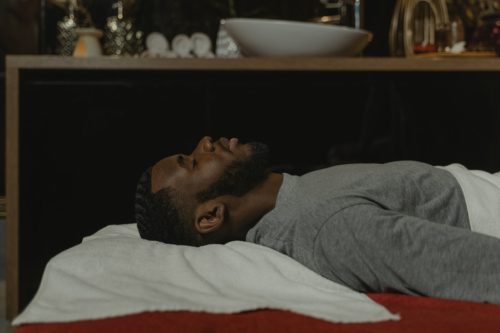How to Increase Bone Density

T he human body is made up of 206 bones. The strength and support of the body depends on bone health and a huge factor in bone health is bone density. If you’re interested in knowing how to increase bone density, tweaking a few habits can go a long way.
The main principle behind bone formation is that inorganic salts are deposited in a gunky pink material termed "osteoid" shortly after it is put down, resulting in the hardened material known as mineralized bone.
Now, the amount of bone mineral in bone tissue(osteoid) is called bone density, or bone mineral density. In other words, it can be the amount of minerals present per volume of bone. If you want stronger bones, there are a few things you can tweak to increase bone density.
The DEXA Scan
A DEXA scan may be used to determine bone density. Normal bone density is defined as a T score of -1 to +1. Osteopenia (aka low bone density) is indicated by a T score of -1 to -2.5. (low bone density). Bone density is low enough to be classified as osteoporosis if the T score is -2.5 or below.
What Happens If Your Bone Density Is Low?
Low bone density may lead to major health problems, including bone fractures. The most concerning issue is osteoporosis, which causes holes within the bone to expand and the outside walls of the bone (the cortex) to shrink due to poor bone density. The bone becomes more brittle as a result of this.
Low Bone Density Signs and Symptoms
1. A fall or slight trauma might result in an acute pain episode.
2. Pain in the midthoracic to lower thoracic or upper lumbar spine is confined to a single, identifiable vertebral level.
3. The pain may be severe, nagging, or mild; movement can aggravate the discomfort; and in certain situations, the pain might spread to the belly.
4. Pain is often accompanied by paravertebral muscular spasms, which are worse by activity and relieved by lying down.
5. Fear of aggravating the pain causes patients to stay immobile in bed.
6. Acute discomfort normally goes away in 4-6 weeks; however, in the case of many fractures and severe kyphosis, the pain might last longer.
Bone Density Enhancement Techniques
Smoking cessation
Smoking is well-known to be harmful to one's health. Many people identify smoking with lung cancer and respiratory problems, but it may also lead to bone disorders like osteoporosis and raise the risk of bone fractures. A person should not smoke, particularly throughout their adolescent and early adult years, in order to maintain good bone density.
High Calcium Diet
The most important vitamin for bone health is calcium. People need adequate calcium in their diets because their bones break down and expand every day.
Rather than having one high-calcium meal each day, the best approach to absorb calcium is to ingest modest quantities throughout the day. Unless your doctor says differently, the best way to receive calcium is via your food. Calcium-rich foods include milk, yogurt, cheese, kale, etc.
Weight-Bearing Exercises
Strength training has been demonstrated in several studies to help reduce bone loss and even grow bone in certain cases. This is quite beneficial in combating the effects of aging on bone mass. Bone-stressing activities may drive bone-forming cells into activity.
Strength training, elliptical training machines, stair climbing, and low-impact aerobics are all exercises that promote bone growth.
Start Hormone Replacement Therapy
When you're going through menopause, it's natural to decrease bone density. HRT is a hormone replacement therapy (HRT) that replicates the feminine hormones estrogen and progesterone. It may be given to women going through menopause to help with menopausal symptoms, bone loss prevention, and osteoporosis treatment. HRT, at various dosages, normalizes turnover and retains bone mineral density (BMD) at all skeletal locations, resulting in a considerable decrease in vertebral and nonvertebral fractures.
Monitor Steroid Use
The first six months after commencing oral steroids are when bone loss is most rapid. There is a slower loss of bone after 12 months of chronic steroid usage. Inhaled steroids are less likely than oral steroids to induce bone loss.
Inhaled steroids, on the other hand, may induce bone loss at greater dosages. Psychological stress causes the body to manufacture corticosteroids; thus, if you're worried about your bone health, taking steps to reduce psychological stress may be useful.
In summary, a lot could be wrong with your bones. From mild osteopenia that occurs with age, to congenital mutations that give you spontaneous fractures, to lethal conditions that cause in utero death of your offspring. Low bone density is one of the less alarming problems to have! Following these well-researched measures on how to increase bone density will go a long way in not just the wellbeing of your skeletal system but also improving your overall health.








